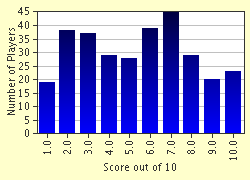Quiz Answer Key and Fun Facts
1. When did the last hanging take place in Britain?
2. Many questionable verdicts contributed to the abolition of the death penalty, among them was the execution on 28 January 1953 of 19 year old Derek Bentley. Who was the young companion to whom he was alleged to have shouted the words 'Let him have it'?
3. On Wednesday 13 July 1955 at Holloway Prison, London, who secured her place in history by becoming the sixteenth and last woman to be executed in Britain in the 20th century?
4. At midnight on 4 October 1922 Frederick Bywaters stabbed and killed his ex-landlord who was returning home with his wife. Despite Bywaters' vigorous claims that the victim's wife had no complicity in the crime, both were arrested, tried and ultimately hanged for the murder. This woman's execution caused a huge public outcry - what was her name?
5. In 1950 John Christie, later to hang for the murder of several women at his home, the now notorious 10 Rillington Place, was a key witness in the trial of which man for a murder at that address?
6. Which man, known as the "A6 murderer", was hanged for the murder of scientist Michael Gregsten by shooting him twice in the head before raping his girlfriend, Valerie Storie, and shooting her five times?
7. What was the nationality of Mahmood Hussein Mattan, a seaman who was hanged for murder on 3 September 1952 in Cardiff and whose conviction was quashed by the Court of Appeal in 1998?
8. After the death penalty had been abolished for murder, it was retained in England and Wales for the crimes of treason and of piracy with violence. Until when?
9. 1,485 death sentences were passed in England and Wales in the 20th century. How many of these were actually carried out?
10. In 1901 Henry was first of this family to become hangman in Britain. His older brother Thomas took up the role in 1909, followed by Henry's son Albert in 1932. What was their surname?
Source: Author
baldricksmum
This quiz was reviewed by FunTrivia editor
bloomsby before going online.
Any errors found in FunTrivia content are routinely corrected through our feedback system.

